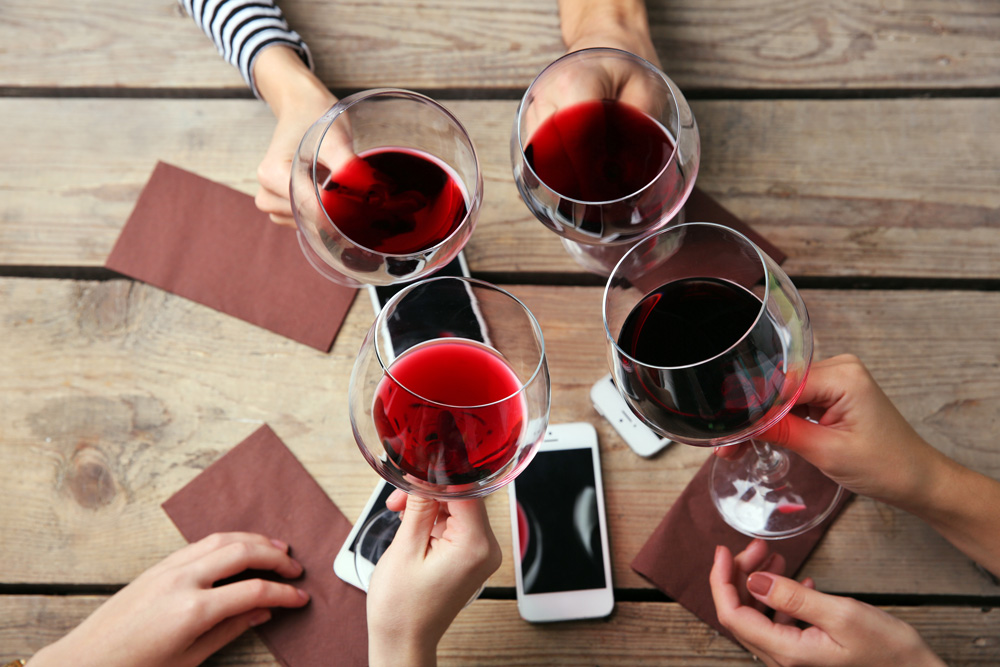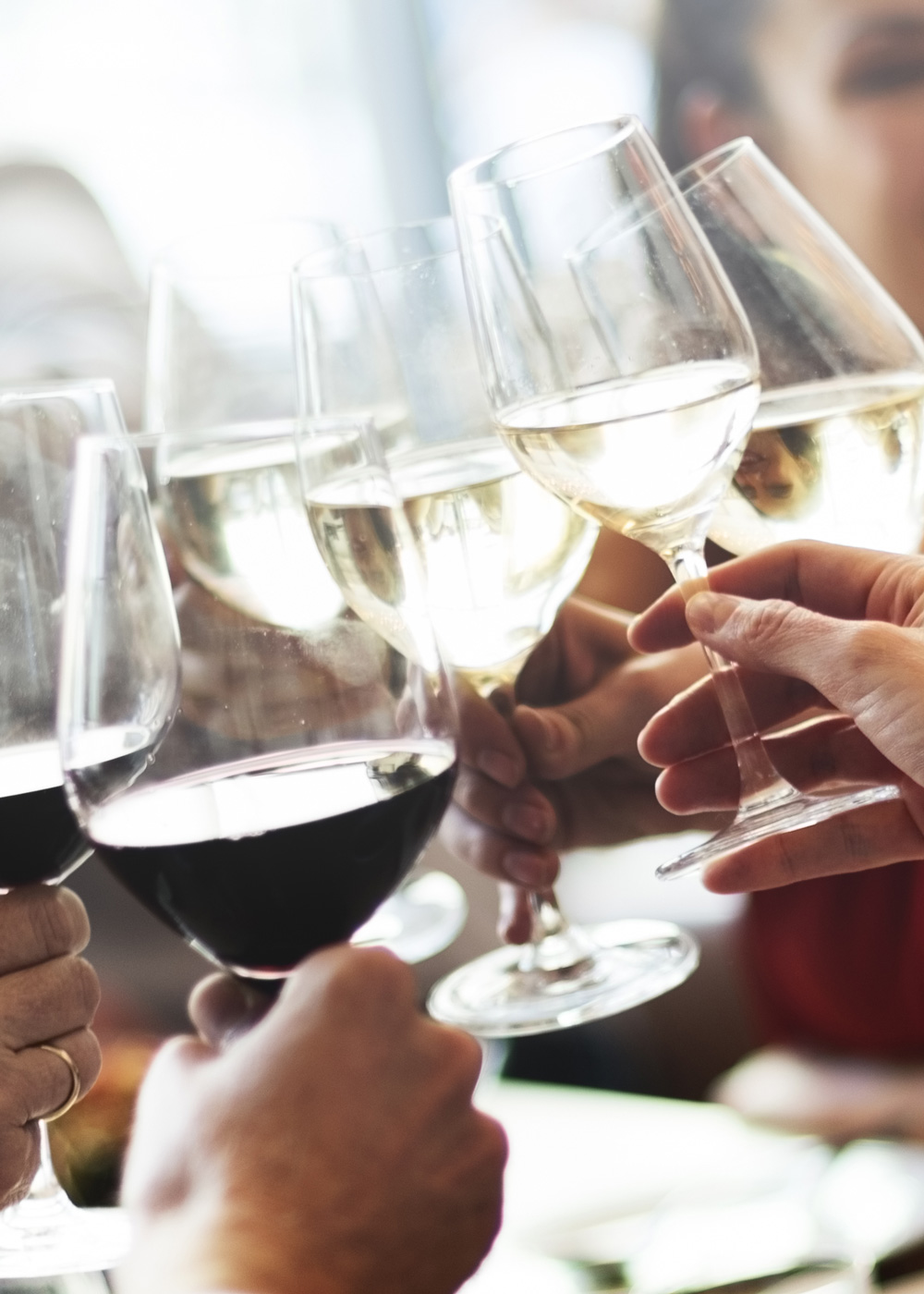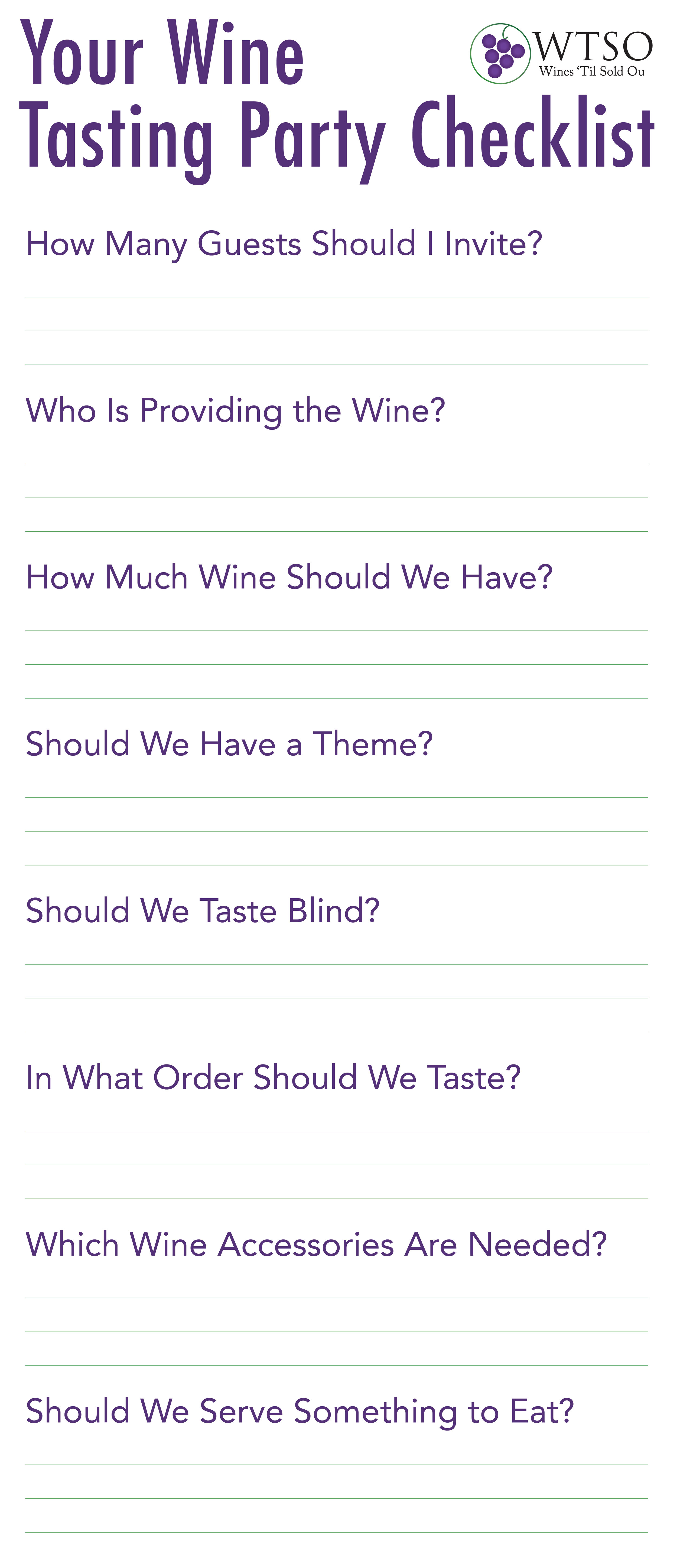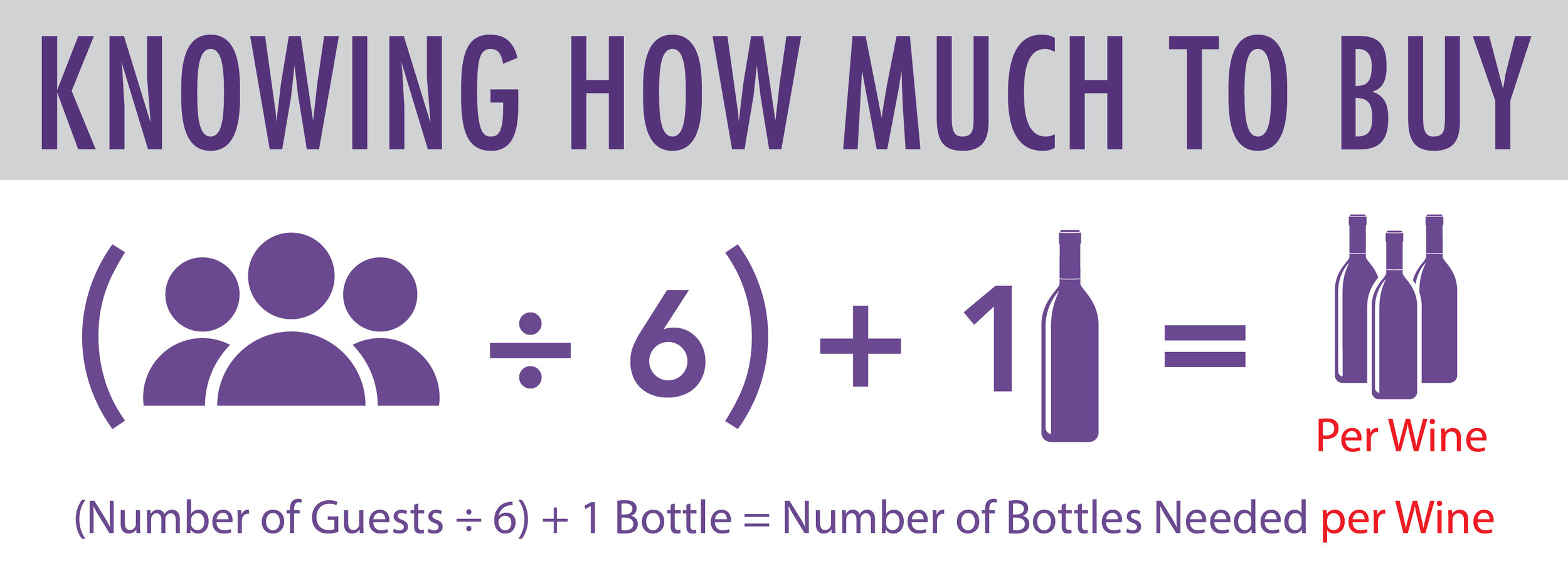Hosting a wine tasting party is a fun way to share your passion for wine with other people. If you want to get the most out of your soirée, here are some questions to consider when planning.
How Many Guests Should I Invite?
The answer to this question depends on the way you plan to organize your party. Do you want everyone to taste one wine at a time together, or will you serve all the wines at once, in order for guests to taste the bottles they choose at their leisure? The methodical approach will usually take more time if everyone takes a turn to share their insights on each wine. If that’s the case, a small gathering of 4 to 8 people is ideal. The leisurely approach can accommodate any number of people, as long as there is enough of each wine for everyone to have a taste.
Who Is Providing the Wine?
Even if you’re a savvy wine shopper, great quantities can add up to a lot of money, so don’t assume that you’ll be supplying all the bottles for your party. It’s not out of line to ask your guests to bring bottles with them if you’ve invited a large group, especially since this request will generally lead to a wide variety of interesting wines. If you have a well-stocked cellar or wine refrigerator, it would be polite to open a special wine or two from your collection. If not, provide whatever you feel is appropriate.
How Much Wine Should We Have?
Assume that 1 bottle of wine will offer 6 tasting pours, with a little to spare. Then, divide the number of people attending your party by 6, and add another bottle on top to estimate how much wine you’ll need. For instance, if you have 12 guests, you will need 3 bottles of each wine being tasted. This will give you a buffer in case of faulty bottles and spills, or if certain guests ask for another taste. You will likely have some extra wine, but it’s always good to be prepared for unexpected situations.
Should We Have a Theme?
Having a theme for your wine tasting party will give guests an idea of what to expect and what type(s) of wine to bring. It also gives people a chance to taste and compare multiple examples within defined parameters. Themes can be very specialized or incredibly broad. For instance, you could simply ask that everyone bring bottles at a set price point, or from one vintage. Perhaps you want to focus on a single grape variety produced in a range of styles or wines from just one growing region. You can also use several guidelines at once, such as Cabernet Sauvignon from Napa Valley’s 2012 vintage selling for $20 to $30. A diverse selection of wines is feasible, even within this specific theme. The possibilities are endless!
Should We Taste Blind?
Blind tasting presents us with the opportunity to objectively evaluate wine without preconceptions. The results of blind tastings can be quite surprising, and allow people to discover both positives and negatives about wines they may have never considered before – sometimes even wines with which they are quite familiar.

In What Order Should We Taste?
Whether you’ve decided to taste blind or not, setting a tasting order for the wines is wise. Whenever possible, a good rule of thumb is to taste whites before reds, and dry wines before sweet. Within this framework, it is also preferable to begin with light-bodied wines and progress to full-bodied ones. If you’re tasting many bottles, you may want to arrange flights of similar wines to stay organized. Don’t forget to chill white, rosé, and sparkling wines before you serve them.
Which Wine Accessories Are Needed?
Just as important as figuring out which wines to taste are the other accessories necessary for tasting. Stemware is essential – you should try to have the same shape of wine glass for everyone. While one glass should be fine for each guest, be prepared to give everyone two. Have a few corkscrews and a decanter on hand, as well as an osso for older bottles. A bucket or spittoon for excess wine will prove useful. Make sure there’s white paper and pencils around for guests who want to write down their wine observations. Also, keep a bottle of Wine Away nearby to remove accidental stains from furniture and carpeting.
Should We Serve Something to Eat?
Your guests will appreciate having something to eat. Light hors d’oeuvres, cheeses, and snacks are all excellent choices, but feel free to show off your culinary skills if you want. It is best to avoid hotly-spiced and sugary foods, since they can interfere with wine tasting. Always have ice water and sliced lemon available as a palate cleanser and for hydration. Serving coffee and tea at the end of your party is also a fine idea.

Whether you’re throwing a tasting party to socialize, gain skills and knowledge, or both, the most important thing is to make sure everyone (yourself included) is enjoying themselves. Following a plan is an excellent way to keep on track and ensure this result. Best of luck and cheers!





